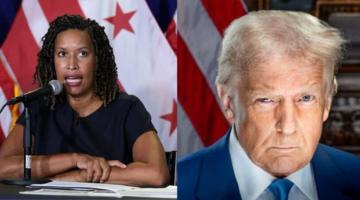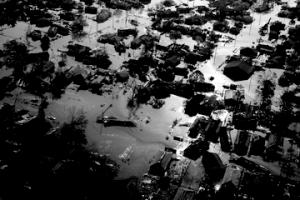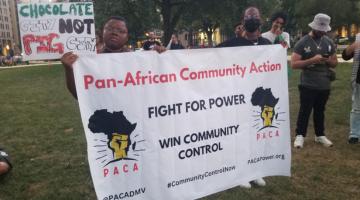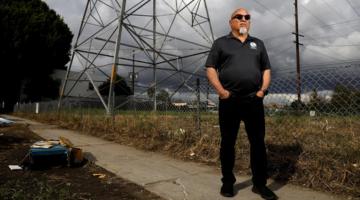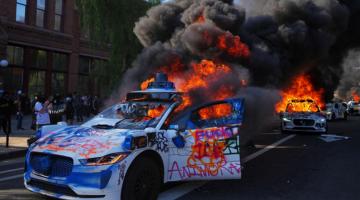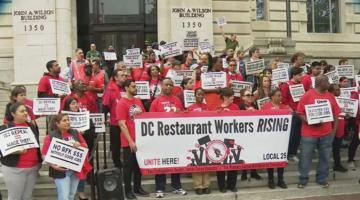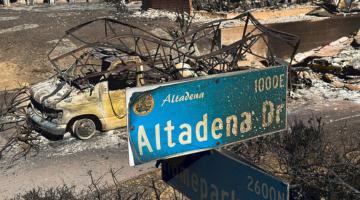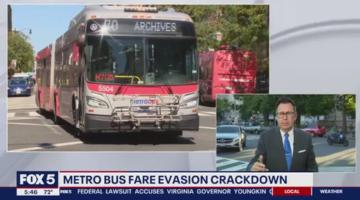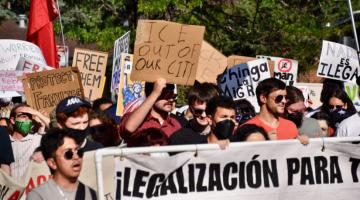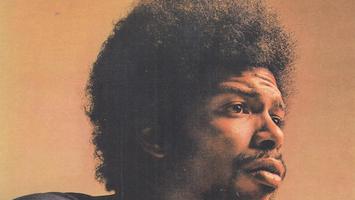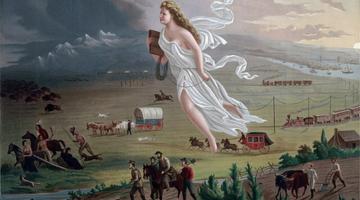The current military occupation of DC is not an anomaly but an escalation of a long war on Black communities. The current occupation is merely a more visible form of this ongoing political subjugation.
Originally published in Anti-Imperialist Scholars Collective.
DC residents are living under an expanded military occupation ordered by Donald Trump that many are calling “unprecedented.” However, this is not the first time this action has been taken. Understanding this history is essential to properly contextualize what is happening now and to focus on the correct narrative and issue to fight going forward.
I grew up in Southeast DC after my mom moved us from our hometown of Jarratt, VA to a little apartment in a four-unit building on Parkland Place when I was about five or six years old. We enjoyed free summer concerts in the park across the street from our building. I used to walk about a half a mile to Malcolm X Elementary school during the week, and to Liff’s Market across the street from that school every Sunday to get the paper for my mom and snacks for myself. We bought fresh fish wrapped in newspaper from the Muslim man who came around with his cart of freshwater delights on Fridays. Retired neighbor lady Mrs. Thomas watched us kids while we played in the park and the woods after school, while our parents were still at work. I walked a mile to Ballou Senior High School almost daily, only opting for the bus when the weather was bad. I volunteered at the Boys and Girls Club on Milwaukee Avenue next to the neighborhood Safeway grocery store off Martin Luther King, Jr. Avenue on weekends. Almost everything we needed was on Martin Luther King, Jr. Avenue or not far away, and even with a strip club on one side of the street and the nation’s oldest mental institution on the other, we kids were happy and safe. We were unbothered navigating our community that to many of us was a great place to be a city kid. Then our neighborhood underwent a disastrous transformation, caused by political decisions that destabilized our communities and left us unprepared for the horror that followed. And then we were blamed and punished for the horror we did not create.
In 1980, President Jimmy Carter signed the Mental Health Systems Act to improve community-based mental health services and reduce the stigma toward mental health. The law provided funding to community mental healthcare providers nationwide to deliver better, more targeted, and relevant care. Federally funded mental health institutions would then focus primarily on treating people who needed to be confined. However, the following year Ronald Reagan repealed Carter’s bill in the Omnibus Budget Reconciliation Act. Instead of direct funding to community mental health programs, Reagan established block grants for the states to provide mental health care. He also ended federal funding for mental health institutions, which suddenly had no money to continue to house and feed patients who were not designated criminally insane and a danger to others. People whose families could not care for them or who could not find another facility to place them (because there were no longer any publicly funded facilities) were simply released into the community with no place to go and no one to take care of them.
As a result, homelessness rose dramatically in affected cities, as did crimes like shoplifting and robbery. In my neighborhood— where St. Elizabeth’s Hospital, the first federally-funded mental hospital in the country, is located— businesses like our neighborhood McDonald’s (where a lot of our senior neighbors would gather for coffee most mornings), the Safeway where we all shopped, and most small businesses that were all across the street from the sprawling mental institution eventually closed. They could not withstand the rise in crime committed by mentally unstable and untreated people in the neighborhood, forced out of St. Elizabeth’s by the privatization of public mental healthcare and abandoned to destitution.
At the same time, Regan gutted the Comprehensive Employment and Training Act (CETA), which provided vocational training and federally subsidized jobs in many marginalized communities. A significant component of the program was summer youth employment, which provided summer jobs for teens in many major cities. CETA jobs for adults also delivered desperately needed services in many communities like affordable childcare, senior services, and other assistance for working-class and poor families. So right along with homelessness and crime, unemployment also rose under Reagan as he yanked vital federally funded programs from under poor Black and other marginalized communities.
Then came crack cocaine— and the violence the trade brought with it. As crack devastated our neighborhoods and some of the kids I grew up with, along with some adults, got sucked into its bottomless pit of despair and degradation, our families were, of course, terrified for us kids. But my mom, who had integrated her high school in our small Southern hometown, was not one to sit idly by while a crisis unfolded around us. She and I joined the neighborhood watch group, called the Orange Hat Patrol, named after the color of the hats and t-shirts the DC government provided these groups, with our neighbors.
While we talked with many of those kids selling (it wasn’t even most of the kids in our neighborhood involved just a very small group) and tried to encourage them to get out of the business as much as we could, we also saw that the demand for crack was driven mainly by people who did not live in our neighborhood, did not live in our city, and mostly did not even look like us. Meanwhile, we were watching our kids be chased down and locked up in droves, even those who had nothing to do with the drug business, even those who had not committed violence against anyone. Yes, we saw those who became addicted deteriorate hopelessly in communities that had been destabilized by government policy and had nothing to help them with. But we also saw no response to the primarily white people invading our neighborhoods chasing their high.
So we took down thousands of license plate numbers and brought them to the police during community meetings held in Southeast DC. Instead of supporting our effort to protect ourselves and our neighborhood doing the only thing we felt we had at our disposal, the lieutenant asked me with a great deal of annoyance, “What exactly do you want me to do with that?” We were told that nothing would be done with those license plate numbers. Yet the arrests of our kids and our neighbors by MPD not only continued, but increased dramatically.
To make matters worse, Reagan’s racist policies continued to cripple our communities with the sentencing disparities for crack versus powder cocaine possession in his Anti-Drug Abuse Act passed in 1986. Mass incarceration of Black men skyrocketed because of this law. And it was Reagan’s own administration that had the CIA involved in trafficking cocaine in the first place, using the illicit profits to buy weapons for the Contras to destroy the socialist Sandinistas. Although that plan failed, the crack epidemic it unleashed devastated our communities and continues to be a crime. Reagan and his cabal have never been held accountable, while the horror it created for us was blamed on us and is still used to justify racist tough-on-crime rhetoric and policies like what is used to justify the current occupation of DC to punish the same group of people.
What is left out of this history and our fight for our people and our communities is that we asked for everything that was taken from and destabilized our communities to be restored. We understood that sadly some of our people had to be removed from society because they committed a horrible act of violence against someone. But that was not what most of our people were locked up for. Most were imprisoned for simple drug possession—but because it was crack, they faced long prison sentences and a permanent felony record that caged them in a barren society, separated from opportunities for the rest of their lives.
It has long been known that poverty is linked to increased crime. We knew this because we were living through it. Yet the way that statistics have historically been used to create the narrative about Black criminality, a narrative that obscured the known root causes of intracommunal crime, as is excellently documented in Khalil Gibran Muhammad’s 2010 book The Condemnation of Blackness: Race, Crime, and The Making of Modern America. Muhammad exposes the history of what Mary F. Corey, in her review of the book, calls “...the statistical lynching of Black Americans by a mob of social scientists.” We experienced that when, in town halls hosted by politicians, in public meetings held by the police, in front of news cameras we pleaded repeatedly to whoever was listening for the return of infrastructure that had been stripped away:community programs, good-paying jobs, decent affordable housing, fully funded public education, in-school and after-school programs, summer jobs for our kids, mental health and addiction services. We knew that we needed to climb out of the crater left by crack. Instead, we got more police with more and more military hardware in our neighborhoods, more arrests, longer prison sentences for simple possession, more racist condemnation of our kids and our criminality, and eventually, the National Guard deployed to our communities.
Yes, it has been done before Trump did it.
In 1989, President George H.W. Bush staged a publicity stunt, having the DEA lure a teenager to the White House so they could buy a little baggie of crack that he later displayed in his first televised address to announce his new chapter in the “War on Drugs.” Despite drug activity and violence already declining by this time, Bush deployed the National Guard to areas of Southeast and Northeast DC to respond to “violent crime” from DC’s “drug culture.” This was not welcomed by then-Mayor Marion Barry, who, along with the police chief and the head of the National Guard, insisted that the Guard would not be allowed to patrol the streets or make arrests. Current mayor Muriel Bowser has not responded as resolutely in defense of the people of DC.
The Trump administration's deployment of the National Guard in DC is definitely different from the National Guard's role in the city back in 1989 as today they are empowered to patrol and arrest. So far, they have acted as backup for the already oppressive MPD that continues stop-and-frisk-style actions. The checkpoints may be new, but the racial profiling, oppressive policing, harsh treatment for low-level, non-violent, misdemeanor offenses, and the racist rhetoric of rampant Black youth criminality used to justify it all are the same.
But DC’s history of racist oppression and the denial of self-determination of DC’s Black residents goes much deeper than contemporary “tough-on-crime” rhetoric and reflects the U.S.’s’ relationship with the descendants of the stolen Africans forcefully brought to this stolen land. After the Civil War ended in 1865, DC became a destination for tens of thousands of formerly enslaved people. Southern senators still angry at losing the war, slavery, and their “property” ended Washington’s self-governance to keep those new residents from having any political access. By 1870, the city had extended voting rights to all regardless of race. But when white supremacist forces violently ended Reconstruction throughout the South, the District was also taken over by white supremacists who moved to keep political power from Black residents. In 1890, the former Confederate general, plantation owner, and Democratic senator John Tyler Morgan of Alabama explained on the Senate floor why DC could not be allowed to govern its affairs:
Now, the historical fact is simply this, that the negroes came into this District from Virginia and Maryland and from other places…. They came in here and they took possession of a certain part of the political power of this District. There was but one way to get out—so Congress thought, so this able committee thought—and that was to deny the right of suffrage entirely to every human being in the District and have every office here controlled by appointment instead of by election…in order to get rid of this load of negro suffrage that was flooded in upon them.
He was not alone in his sentiments. The ongoing history of political antagonism toward Black DC residents is also evident among 20th-century politicians like Pat Buchanan, who said in the 1970s that giving DC representation in Congress would be akin to an affirmative action program. No conservative has ever used that phrase to mean anything positive.
That racist tradition has continued for generations. Washington, DC finally achieved Home Rule in 1973, ending the Congressional appointment of white male city managers and allowing DC residents to elect their city government. But DC still did not gain complete autonomy. The US Constitution, in Article 1, Section 8, Clause 17, stipulates that laws passed by the District’s city council and the city’s budget must be reviewed and approved by Congress. The Home Rule Act of 1973 did not overturn this requirement, and it remains in effect today.
In keeping with the racist sentiments of conservative politicians, DC still does not have voting representation in Congress, but we still pay federal taxes. At the same time, dozens of federal law enforcement agencies —MPD —operate in Washington, DC, with jurisdiction to make arrests throughout the city, not just near the agency’s headquarters.
So, Washington, DC has never been truly independent of Congressional control, and its residents have been under the jurisdiction of various federal law enforcement agencies for decades. In this context, it is difficult to see Trump’s “takeover of DC” as a genuine takeover. If DC never controlled itself in the first place, who is he taking it over from—Congress that already has final say and veto power over our affairs?
In an almost obscene twist, in many cities today with Black mayors and large Black and working-class or poor populations like Washington, DC, the oppression of those residents is carried out more directly through neoliberal policies imposed by Democrats who uphold the same racist tough-on-crime rhetoric that white conservatives cooked up. Working-class and poor DC residents have struggled for years under Mayor Bowser’s administrations and her contempt for the poor and allegiance to the capitalist class for years. She requested that the Department of Defense deploy the DC National Guard to clear people from Lafayette Square Park in the George Floyd protests of 2020 and then complained when the Attorney General refused to criminally charge and prosecute them—only to be told by the AG that the police did not provide evidence that supported the charges. She and the members of the city council have consistently allocated over $500 million every year to the MPD, funding the oppression of poor residents through the occupation and overpolicing our neighborhoods. She has repeatedly directed MPD and the DC Department of Public Works to clear homeless encampments, with no guarantee of housing for everyone displaced and no economic relief for those who are employed and homeless because they do not make enough money to afford housing. And the criminalization of Black youth and the poor has been a constant feature of Bowser’s administration. So do not count the current DC Mayor among Trump’s “takeover” victims. His blatant racism and authoritarianism does not negate Bowser’s own authoritarianism and blatant class antagonism toward the working class and poor.
Trump’s initial deployment of the National Guard to DC is not unprecedented. Instead it is an escalation of a centuries-long war against Black, working-class, and poor people waged by both political parties and supported by much of the U.S. population because of the incessant racist rhetoric about Black crime. While this escalation is frightening—a threat to the safety of our youth in particular, an attack on our very limited sovereignty, and a test case for what he plans to do in other cities like DC—we must be clear: Trump did not have to do much to escalate what was already a violently undemocratic and oppressive police state. The ongoing war against Black, poor, and marginalized people that Trump has escalated will not end when the National Guard leaves. The focus remains on how the people can win this war and destroy the system that made all of this possible.
Jacquie Luqman is a radical activist based in Washington, DC, and the co-founder of Luqman Nation, an independent Black media outlet.

